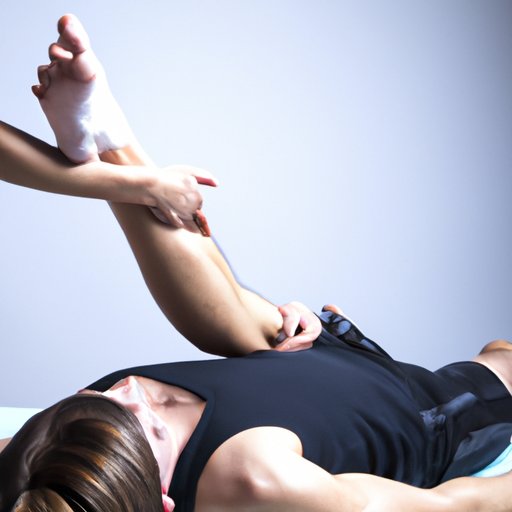Introduction
Regular exercise is a key part of leading a healthy lifestyle. But sometimes after a workout, you may find yourself dealing with sore muscles. This can be uncomfortable and discouraging, but understanding why your muscles are hurting can help you manage and prevent the pain.
Exploring the Causes of Muscle Soreness After a Workout
When you exercise, your muscles contract and stretch in order to move your body. This repetitive motion causes microscopic tears in the muscle fibers. As these tears heal, your muscles become stronger and more resilient. However, this process also leads to inflammation, which can cause discomfort.
This type of muscle soreness is called delayed onset muscle soreness (DOMS). It usually starts around 24 to 48 hours after a workout and peaks at 72 hours. Symptoms of DOMS include stiffness, swelling, tenderness, and pain when you move or touch the affected area.

How to Minimize Muscle Pain After Exercise
There are several ways to reduce muscle soreness after a workout. The most important thing is to listen to your body and rest when needed. Here are some other tips:
The Benefits of Post-Workout Stretching
Stretching after a workout helps reduce muscle tension, improve flexibility, and increase blood flow to the muscles. This helps reduce soreness and decrease recovery time. Make sure to hold each stretch for 30 seconds and focus on the areas that feel tight.
How to Manage Muscle Soreness With Diet and Supplements
Eating a balanced diet and taking supplements can help reduce inflammation and speed up muscle recovery. Foods rich in omega-3 fatty acids, such as salmon, walnuts, and chia seeds, can reduce inflammation. Taking antioxidants such as vitamin C, vitamin E, and beta carotene can also help. Supplements like glucosamine and chondroitin can also aid in muscle recovery.
Treating Muscle Soreness Through Massage Therapy
Massage therapy can be an effective way to relieve muscle soreness. Massage increases blood flow to the muscles, which helps reduce inflammation and promote healing. It can also reduce stress, improve sleep quality, and relax tense muscles. If you’re experiencing severe pain, consider visiting a massage therapist for deep tissue work.

What to Do When Muscles Are Too Sore to Keep Working Out
If your muscles are too sore to keep exercising, take a break. Resting will give your body time to recover and prevent further damage. You can also apply ice or heat to the affected area to help reduce inflammation. Light stretching can also help reduce stiffness.
Conclusion
Muscle soreness after a workout is normal and can be managed with proper rest and self-care. To prevent and reduce muscle soreness, make sure to stretch after exercising, eat a balanced diet, and get enough rest. If your muscles are too sore to continue working out, take a break and apply ice or heat to the affected area. With these tips, you can enjoy the benefits of exercising without having to deal with too much muscle pain.
(Note: Is this article not meeting your expectations? Do you have knowledge or insights to share? Unlock new opportunities and expand your reach by joining our authors team. Click Registration to join us and share your expertise with our readers.)
